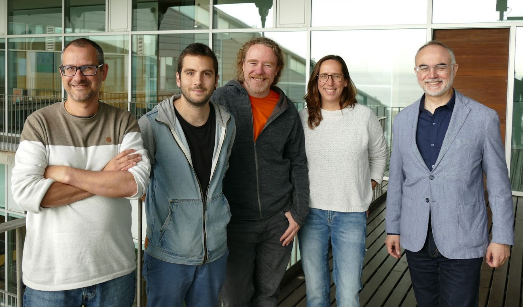Deciphering the silent footprint of human health
Deciphering the silent footprint of human health
A study co-led by the Institute of Evolutionary Biology (IBE) with Illumina and the Baylor College of Medicine identifies hundreds of thousands of constrained regions, in the noncoding human genome, by comparing the largest database of primate and placental mammal genomes.
The genomic elements discovered are exclusively constrained among primates and humans, and their function could shed light on how the human genome works.
The research shows that many of these genomic elements of human DNA have relatively recent origins and could cast light on our biological traits and the bases of our diseases.

A study published in the journal Nature co-led by the Institute of Evolutionary Biology (IBE), a joint centre of the Spanish National Research Council (CSIC) and Pompeu Fabra University (UPF), Illumina and the Baylor College of Medicine, with the collaboration of the National Centre for Genomic Analysis (CNAG), provides a new vision on the genetic information of primates that could reveal key data on the least known parts of the human genome - the noncoding genome - its role in health and in our evolution. This study is a continuation of the special issue of Science published in June 2023, which gathered the largest catalogue of primate genomic information to date.
The noncoding genome does not contain information about the proteins in our body and, although it accounts for 99% of DNA, its function is largely unknown.
Thanks to the DNA sequenced at the CNAG, the study has generated and compared the genomes of 239 species of primates and 202 species of placental mammals. The analysis has revealed that there are hundreds of thousands of noncoding regulatory sequences, resulting from recent evolutionary adaptations, that are conserved exclusively in primates and humans.

Noncoding genome sequences identified that regulate human health
The preservation or absence of changes in genomic elements throughout evolution due to natural selection is an indication of the importance of their role in the survival of a species or an order of animals such as primates, including humans. Hence, a slight variation in their DNA sequence in the hundreds of thousands of regulatory regions identified in this study could lead to alterations in our biological traits, including human health.
“Conservation in regions of the human genome is one of the most powerful tools we have to discover functionality in the vast human genome. Understanding genome functionality is still one of the most important challenges in human genetics”, says Tomàs Marqués-Bonet, an ICREA researcher at the IBE and a full professor of Genetics at the Department of Medicine and Life Sciences (MELIS) at Pompeu Fabra University (UPF).
An essential step for the genetic mapping of diseases in the noncoding genome
Understanding the effects of human genetic variants is crucial for the accurate diagnosis and treatment of genetic diseases. However, the effects of genetic variants on the noncoding genome remain difficult to predict.
In contrast, with protein-coding DNA sequences, a far more studied part of the genome, recent advances have been made using deep learning techniques. Now, this technology could be applied to the noncoding sequences identified in the study.
“Mapping the sequencing elements constrained in the noncoding genome is an essential step towards understanding the effects of all variants across the genome and linking them to specific disease traits and outcomes”, explains Lukas Kuderna, first author of the study, currently a researcher at Illumina and formerly at IBE.

Noncoding sequences reveal new data concerning human evolution
To date, comparative genomics studies have succeeded in finding constrained sequences in distant placental mammal species. However, recent evolutionary adaptations closer to the origin of our own species have proved far more difficult to identify. This occurs because they are found in the noncoding genome which, compared to coding DNA, evolves much faster.
By comparing constrained sequences in primate species and humans, the study demonstrates that a substantial fraction of the noncoding regulatory elements of the human genome have relatively recent origins.
The noncoding genome that makes us unique among mammals
The study demonstrates that many of these noncoding regulatory elements, previously thought not to be constrained and of uncertain biological significance, actually represent recent evolutionary adaptations of our order.
“These DNA regulatory elements, which have been constrained throughout primate evolution, could play a fundamental role in the development of primate and human traits, offering new insights into the molecular underpinnings of the unique biology of our own species”, Tomàs Marquès-Bonet affirms.
Reference article:
Kuderna, L.F.K et al., ‘Identification of constrained sequence elements across 239 primate genomes’ Nature. Nov, 2023. DOI: 10.1038/s41586-023-06798-8
